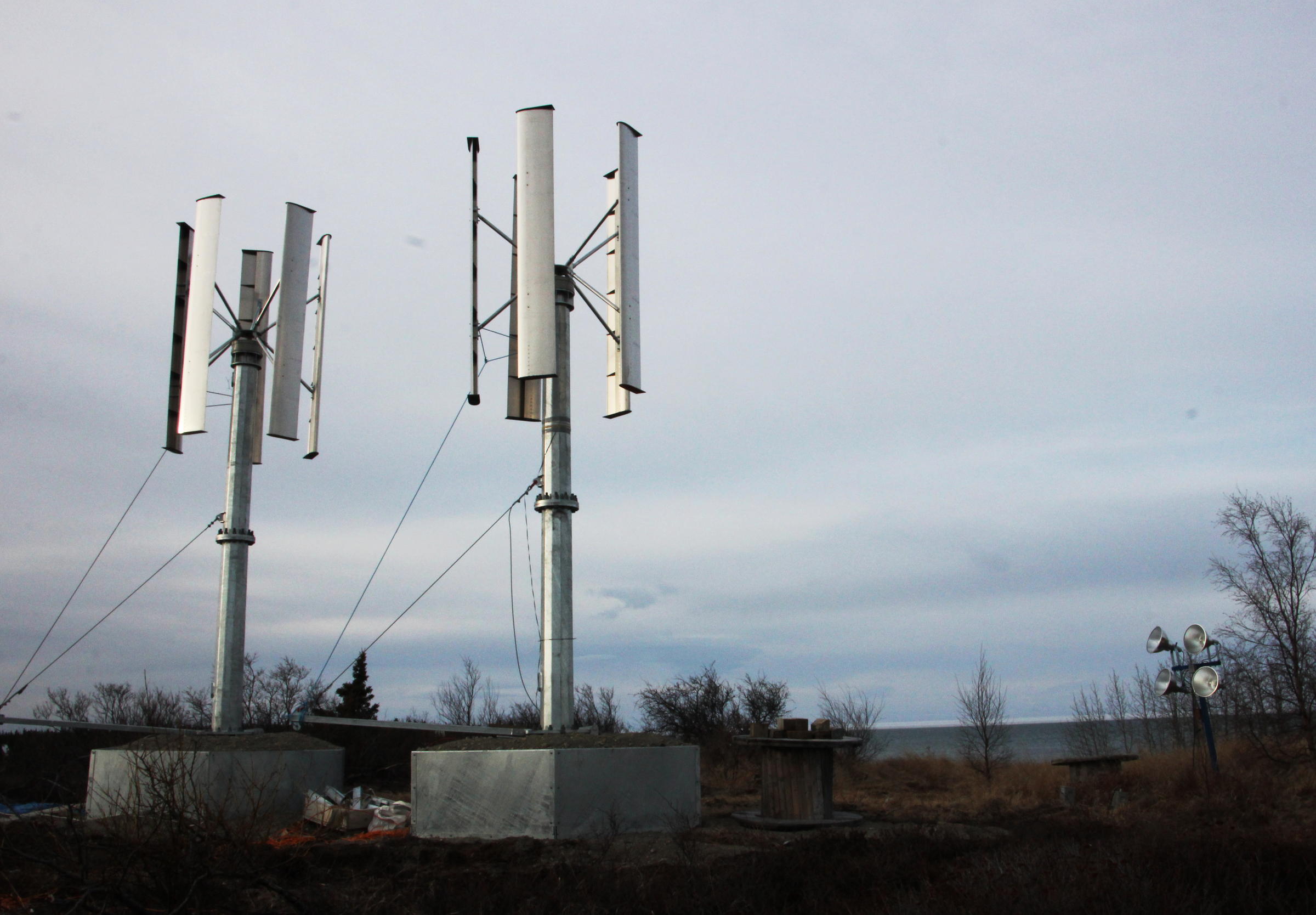
Igiugig is looking to the forces of nature to tamp down the cost of running diesel generators to power the village of 69 people. Specifically, they are working on harnessing the winds that sweep the region and the swift flowing Kvichak River.
The village is piloting two wind energy projects, horizontal and vertical axis wind turbines. Both projects have required design improvements to allow turbines to withstand high winds and harsh winter conditions. Further, the village is working with engineers to identify the source of frequency fluctuations on the village power grid, which disrupt the turbines’ operation. Though progress is slow, they have had some success.
“We do have some turbines that are operating fairly well, and we do believe we have a good wind resource here,” village administrator, Karl Hill said. “We’re testing right now.”
Horizontal axis wind turbines are the most common type of turbine, propeller-like blades attached to the top of a tall pole, similar to a windmill. Igiugig has installed six. Two are operating correctly, one at the village greenhouse and one at a residential home.
Two vertical axis wind turbines sit on a small hill overlooking the Kvichak River. Their vertical blades spin as a fixed cylinder around a center pole like a spinning lampshade. Stanford and the University of Alaska Anchorage are collaborating on that project, utilizing a grant of about $2 million from the Gordon and Betty Moore Foundation.
The experimental design allows engineers to install a group of turbines in a small area.
“The conventional industry standard was that you think of each of the wind turbines as an isolated unit, and it just tries to generate as much energy as it can without worrying about the consequences for the air around its neighbors,” John Dabiri said. He’s a professor at Stanford University, who is working on the Project.
On that model, turbines must be spread far apart to create an efficient wind farm.
“In many applications like this village, that’s not really an option,” Dabiri said. “This is pristine land, and you don’t want to dedicate your entire village to energy generation.”
This winter, designers hope to test and improve the robustness of their design before installing more vertical axis turbines.
Igiugig had high hopes for a RivGen run-of-the-river hydropower system. The Ocean Renewable Power Company worked for three summers on developing the floating device that they estimate could have offset half of their diesel consumption. The U.S. Department of Energy awarded them $392,500 in 2016 for testing and design improvements. The grant was competitive, and Igiugig applied for the next phase of funding this summer. However, they were not selected, so work on the hydroelectric project is stalled.
“It’s a viable technology, and we think that it could still benefit our village,” Hill said. “The funding source did say that if further funding came down, they would definitely fund our project. The likelihood of that, to be realistic is fairly slim with the way budgets are these days.”
Igiugig has not given up. Finding another source of funding for that project is a top priority in their continual effort to rely on alternative energy
An engineer was in the village last month to work on the electronics that undergird the wind energy projects. Robert Wills is the president of Intergrid, a power electronics consulting company. In addition to working on the wind energy systems, he has also been involved in the RivGen system. The way he sees it, running Igiugig on alternative energy is possible and cost effective in the long run.
“To do what we really need to do for the village here, it has to involve battery storage,” Wills said. “It’ll involve the hydrokinetic turbine in the river and some wind turbines—maybe a vertical axis array and some maybe larger horizontal machines. If you add all that up, it’s probably more than a million [dollars]. But do you know how much they pay for fuel here a year? It’s about a quarter million.”
That’s the primary driver for all these projects—fuel costs. Diesel has to be flown in. As the village continues to pay between $5.75 and $6.33 for every gallon of diesel, they are committed to finding another way to keep the lights on.




